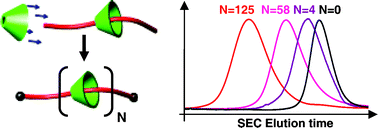Synthesis and characterization of high molecular weight polyrotaxanes: towards the control over a wide range of threaded α-cyclodextrins
Abstract
This work focuses on the synthesis of polyrotaxanes with high molecular weight template poly(ethylene glycol) PEG (20 kg mol−1) having various and well-defined amounts of α-cyclodextrins (α-CD) per chain N from 3 up to 125. N is the complexation degree of the polyrotaxane defined to be the average number of


 Please wait while we load your content...
Please wait while we load your content...